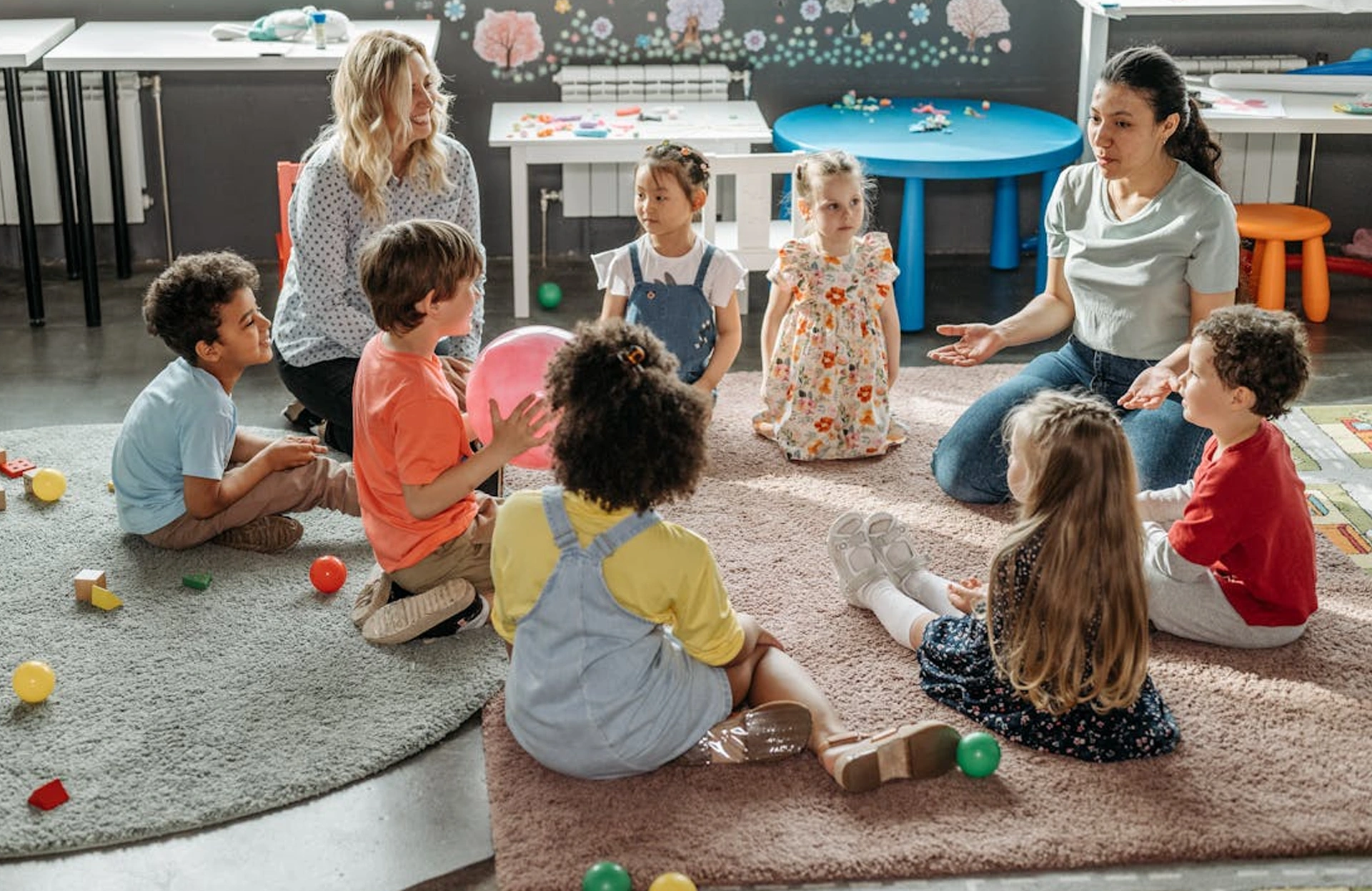Parents today often find themselves wading through a sea of educational philosophies, Waldorf, Montessori, Reggio Emilia, all promising creativity, independence, and joy in learning. Each sounds beautiful in its own way, but sometimes, it’s hard to know how they differ and what truly fits your child.
So how do you choose among them? Perhaps not by asking which is best, but which feels right for your child and your family.
To begin, it helps to understand what each philosophy values most, how they see the child, what they consider “learning,” and the kind of environment they create to support it. What we can offer here is not a comparison chart, but a glimpse into the heart of Waldorf, and how it stands beside other like-minded approaches
Three Paths, One Purpose
While each of these philosophies has its own origin and emphasis, what connects them is a shared belief: that education is a living process, not a mechanical one. All three – Montessori, Reggio Emilia, and Waldorf, see the child as capable, curious, and worthy of respect, learning best through movement, play, exploration, and relationship.
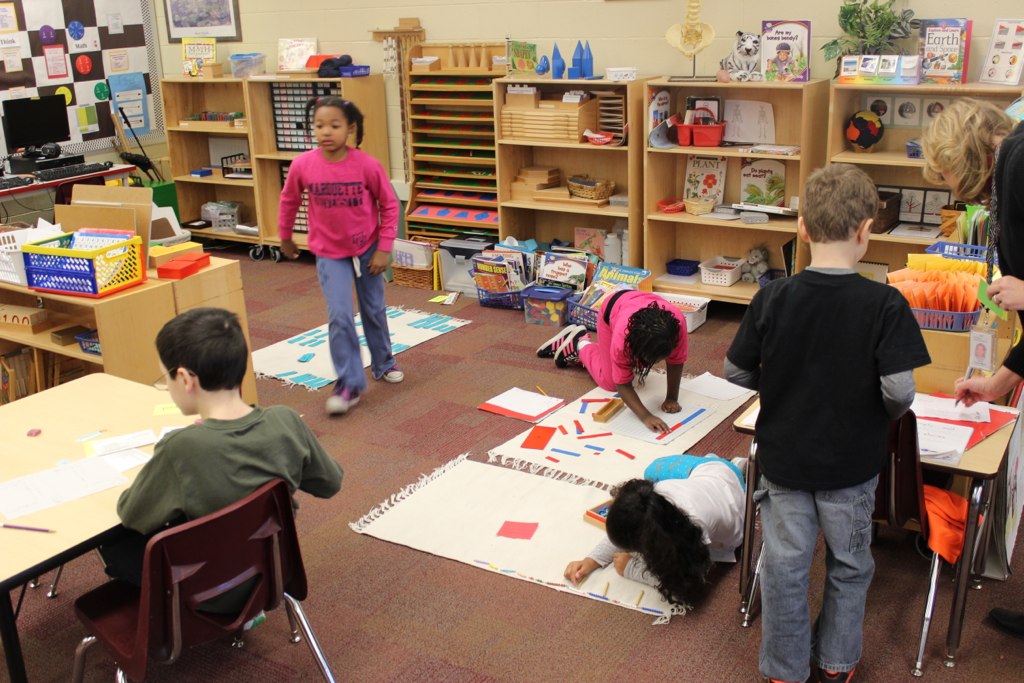
In Montessori classrooms, the focus is on independence and purposeful work. Children move freely, choosing from thoughtfully prepared materials, pouring, sorting, polishing, counting and repeat activities until mastery. The environment is calm and ordered, designed to nurture focus and self-direction, while the adult gently observes and guides rather than instructs.
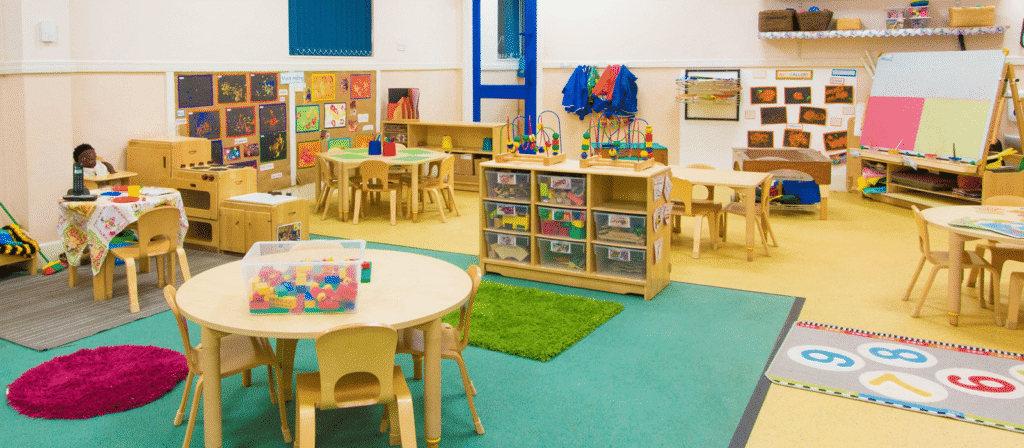
In Reggio Emilia, learning grows out of children’s natural curiosity and collective inquiry. Teachers and children explore ideas together through long-term projects, using art, movement, storytelling, and dialogue as ways of thinking and expressing. The classrooms are filled with children’s work, drawings, notes, and photographs, creating a space that invites reflection, collaboration, and wonder every day.
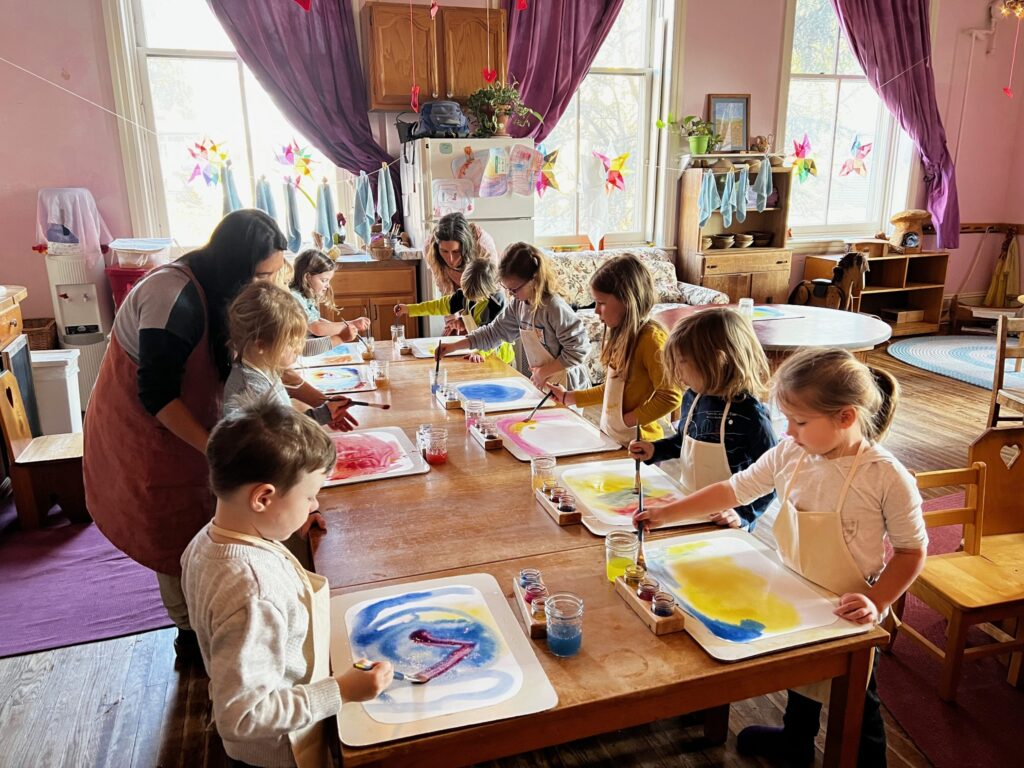
In Waldorf education, learning unfolds in stages that reflect human development. The early years center on imitation, imagination, and play, while the later years gradually awaken intellectual, artistic, and moral understanding in step with each child’s growth. The teacher guides through example and rhythm, staying with the same group over several years to foster trust and continuity. In the classroom, children bake bread, build forts, paint with watercolors, and sing seasonal songs nourishing their senses and creativity.
Each of these philosophies offers its own language for how children learn — Montessori through independence, Reggio through collaboration, and Waldorf through imagination and rhythm. Together, they remind us that there isn’t one “right” way to learn, only different paths that honor the wonder and unfolding of childhood.
Why Choosing One Approach Matters – and the Waldorf Perspective
Every educational approach has its strengths. However, research and experience shows that children learn best when a school follows one consistent method rather than mixing different philosophies. Switching between frameworks can confuse young learners, weaken the curriculum, and make it harder to build strong habits, relationships, and understanding.
That’s why, when exploring options, it helps to dive deeper into a single philosophy and understand how it works in practice. Here, we take a closer look at Waldorf, giving insight into what makes it unique. Waldorf education places a strong emphasis on imaginative play, storytelling, and hands-on artistic work as tools for learning across subjects. It nurtures emotional intelligence and social skills through long-term class communities, seasonal festivals, and collaborative projects. Rhythm and repetition are woven not just into the daily schedule but into language, music, and movement, helping children internalize lessons naturally. Practical life skills, from baking to gardening are integrated seamlessly, teaching responsibility, care, and connection to the world.
The approach also emphasizes delayed academics in the early years, allowing children’s imagination, curiosity, and physical coordination to develop fully before formal reading, writing, and math begin. Over time, these foundations support not only academic learning but also resilience, focus, and creativity, ensuring growth of the whole child – head, heart, and hands.
Making the Choice: Finding the Right Fit
Choosing a school is about more than labels or philosophies. It’s about finding an environment where your child can learn and grow intellectually, emotionally, and socially. While understanding different approaches is helpful, what matters most is how the philosophy is lived day to day.
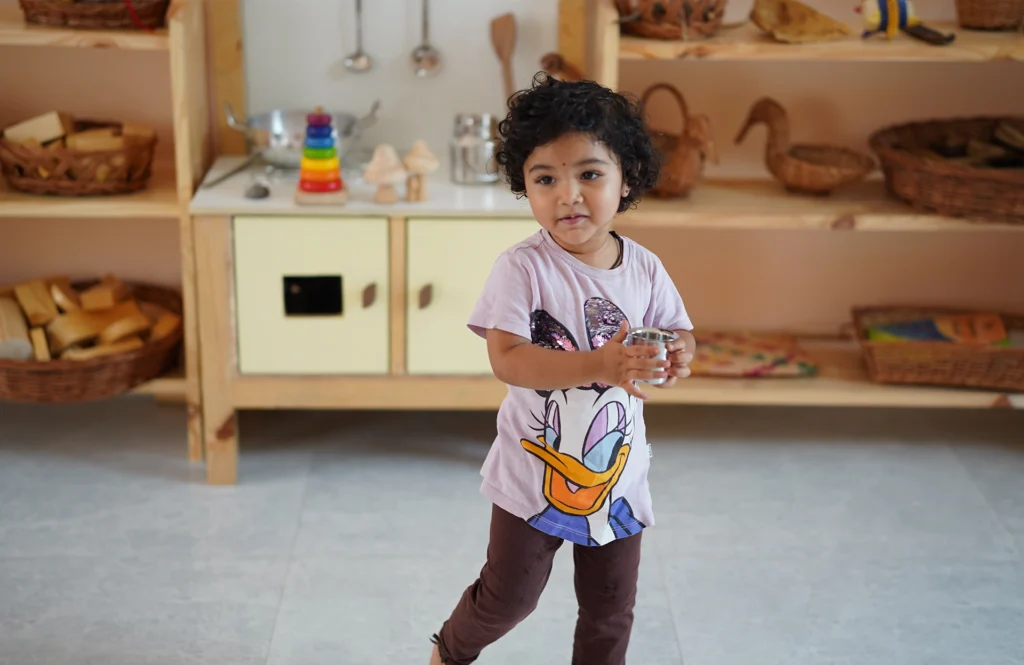
Some children thrive in structured independence, others in open-ended collaboration. Some families are drawn to a project-rich classroom full of conversation and art, while others resonate with the steady rhythm, hands-on learning, and warm continuity that Waldorf emphasizes. The key is to notice what aligns with your child’s temperament and your family’s values.
Visiting a School: What to Observe
When exploring schools, take time to watch quietly. Are children engaged and moving with purpose, or waiting for constant instructions? Do adults speak calmly, at the child’s level, and guide rather than control? Is there daily outdoor time, hands-on activities, and opportunities for exploration — not just occasional experiences?
Notice how learning is documented: through checklists, portfolios, or narrative reflections? How do teachers handle screens, parent communication, and daily routines? Ask for concrete examples, and look for proof on shelves and walls rather than slogans. The right school is one where your child feels seen, trusted, and inspired, and where learning is an experience, not just a checklist.


